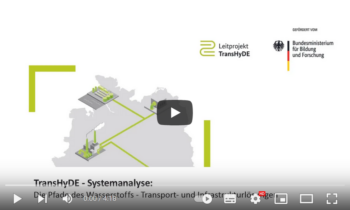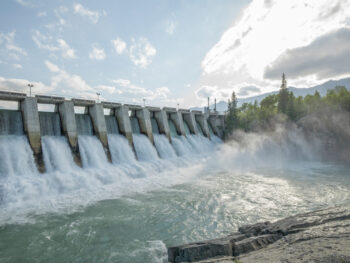Info: Electrification vs. vRES potentials in Europe – is the potential for variable renewable energy sources sufficient to cover post electrification electricity demand?
In our publication „Potentials of Variable Renewable Energy Sources and „Low-Hanging Fruits“ Electrification in Europe“ we address the question to what extent the post-electrification electricity demand could be covered through variable renewable energy sources (vRES) in our 16 eXtremOS core countries. We updated and expanded our figures to include 39 European countries and added clarifications concerning the definition of the depicted potential. Country specific information can be found in our country profiles and electrification profiles.
Definition of potential layers for classifying vRES potentials
When comparing vRES potential to electricity demand after electrification, it is important to specify the term potential. We therefore expanded the concept of our FfE potential ellipses developed in „Kopernikus Projekt SynErgie, Demand Response in der Industrie – Status und Potenziale in Deutschland and [1] to allow for a distinct classification of vRES potentials. Figure 1 shows the potential layers.

The definitions shown in the following table are tailored to the case of vRES potential. However, the concept of potential layers can be adapted to fit other applications.
| The theoretical potential is the upper bound for all potential calculations. It is the potential for vRES in the case that all of the relevant areas (e.g. rooftops, land surface, seas and oceans) can be used for constructing vRES and all wind and solar energy at these locations can be converted to electricity without efficiency losses. | |
| The technical potential is a subset of the theoretical potential and includes all relevant technical restrictions as well as security aspects. Exemplary restrictions are maximum sea depth for bottom-fixed offshore turbines, the maximum power density as a result of the type of PV module or wind turbine and the exclusion of areas where difficult terrain (e.g. slopes, sea ice) or settlements prohibit the construction of vRES. | |
| To derive the economic potential, the technical potential is further reduced by only allowing economically feasible vRES locations. In this analysis, this step is performed by defining a minimum number of full-load hours that a location needs to provide. | In order to derive the practical potential regulatory and administrative barriers are taken into account. This includes aspects such as protected areas and buffer zones around settlements and protected areas. |
| The economic and practical rated potential are introduced in order to allow for a further reduction of the available areas for vRES. They are tied directly to the economic or practical potential layer and encompass restrictions which reduce the potential in practice, but cannot be quantified, due to a lack of data. An example is the reduction of the vRES potential as a result of acceptance issues based on expert knowledge (rated practical potential). The rated potential is calculated by applying a percentage to the technical and/or economic potential. | |
| The realizable potential is the intersection of the rated economic and practical potential. It is consequently the vRES potential which is technically feasible, profitable for the operator and considers practical barriers. | |
| The realized potential is the share of the realizable potential which is actually implemented. When calculating a scenario using an energy system model, the realized potential is the installed capacity and energy provided by vRES as a result of the model runs. | |
Comparing vRES potentials to post-electrification electricity demand in Europe
A common argument against widespread electrification is that the potential for renewable energy sources is insufficient to cover the additional electricity demand. In Figure 2, realizable vRES potentials are compared to the electrical final energy consumption in case of a “low-hanging fruits” electrification scenario. Analyzed vRES are onshore and (bottom-fixed and floating) offshore wind and offsite and onsite solar power. Electrification is assumed for passenger road transport, heating and hot water and process heat. For details about electrification and vRES assumptions please cf. the methodology slides of our FfE country profiles.

The results in Figure 2 show that the vRES potential in all analyzed countries and energy carriers is approximately 52,000 TWh. The total post-electrification electricity demand amounts to approximately 5,000 TWh. In most European countries the realizable potential for vRES is significantly higher than the required electrical energy consumption after direct electrification. However, in countries such as Belgium, Luxembourg, Slovenia and Switzerland, the electrification of large shares of the transport, industry, service and household sector results in an electricity demand which exceeds the domestic vRES potential. Reasons for this are for example: high settlement densities and other site-specific aspects such as low wind occurrence or hilly terrain. While the vRES potential exceeds the electricity demand in most cases, the resulting transmission task and peak load need to undergo further analyses in order to assess the challenges of European electrification holistically.
References:
[1] Wagner, Ulrich: Prozeßrechnergestütztes Verfahren zur Bestimmung der Energieausbeute von Traktionsbatterien in: IfE Schriftenreihe Heft 21. München: TU München, 1987
[2] Das Kopernikus-Projekt SynErgie
[3] Demand Response in der Industrie – Status und Potenziale in Deutschland


